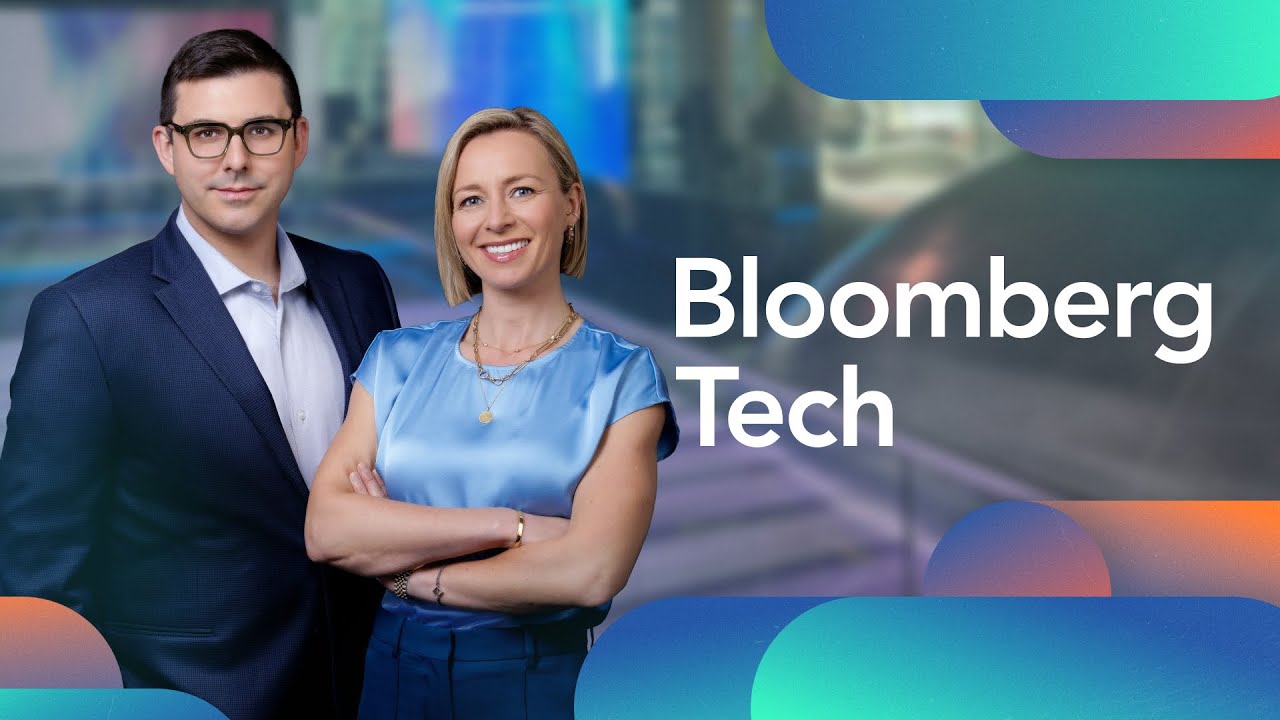NVIDIA CEO Jensen Huang met with former President Trump to discuss easing U.S. tech export restrictions to China, while Apple prepares iterative product updates and Hugging Face launches an open-source mini robot to democratize AI-driven robotics. Meanwhile, Amazon’s extended Prime Day boosts retail competition, major tech firms anticipate AI-driven growth despite workforce cuts, and Tesla plans to expand its robotaxi services pending regulatory approval.
The Bloomberg Tech segment opens with news of NVIDIA CEO Jensen Huang meeting former President Donald Trump at the White House, likely discussing U.S. technology export restrictions to China ahead of Huang’s planned trip to the country. The conversation centers on concerns that strict export curbs could hinder American tech companies’ ability to compete in the Chinese semiconductor market, especially in artificial intelligence. Huang advocates for easing some restrictions to maintain U.S. leadership and counter Chinese rivals like Huawei. Meanwhile, escalating trade tensions have led to increased tariffs on imports from countries like Canada and Brazil, affecting key sectors such as automotive technology.
Apple is preparing a lineup of new products for the first half of 2026, including updated iPhones, iPads, and Macs. However, these releases are expected to be iterative upgrades rather than revolutionary innovations, reflecting the slowing pace of chip performance improvements. Apple’s delayed smart home hub with advanced AI voice control is anticipated to launch early next year, signaling a cautious but steady approach to integrating AI and smart home technology. This strategy aims to provide consistent revenue streams while gradually enhancing product capabilities.
In robotics and AI, Hugging Face has introduced a new open-source mini robot designed to be programmable and interactive, encouraging community-driven development of new applications. The robot features sensors, cameras, microphones, and speakers, allowing it to engage in various tasks such as cooking assistance or entertainment. This open-source approach contrasts with the traditionally expensive and closed robotics market, aiming to democratize access and innovation in human-robot interaction. The company plans to navigate current trade and tariff challenges by sourcing parts locally and expanding production globally.
Amazon’s Prime Day, now a four-day event, is concluding with strong consumer engagement despite a slower start. Retailers like Walmart and Target have followed Amazon’s lead by offering competitive sales, intensifying the battle for consumer attention. Amazon’s key advantage remains its vast product selection, competitive pricing, and superior logistics, enabling rapid delivery that enhances customer satisfaction. The event also highlights the growing importance of retail media and data-driven advertising, with Amazon leveraging partnerships to target consumers more effectively across platforms.
The segment concludes with a focus on the AI-driven earnings outlook for major tech companies like Microsoft, Alphabet, and Meta. Analysts expect cloud computing and AI integration to drive revenue growth and operational efficiencies, despite ongoing workforce reductions. The discussion emphasizes the evolving balance between AI investment and cost management, with companies seeking to demonstrate clear returns on AI spending. Additionally, the crypto industry anticipates regulatory clarity with upcoming legislation, which could solidify the U.S. as a global leader in digital assets and stablecoins, fostering innovation and economic growth. Tesla’s robotaxi ambitions are also covered, noting regulatory hurdles and the company’s plans to expand driverless taxi services beyond Austin to California and Arizona, though full deployment remains pending regulatory approval.
